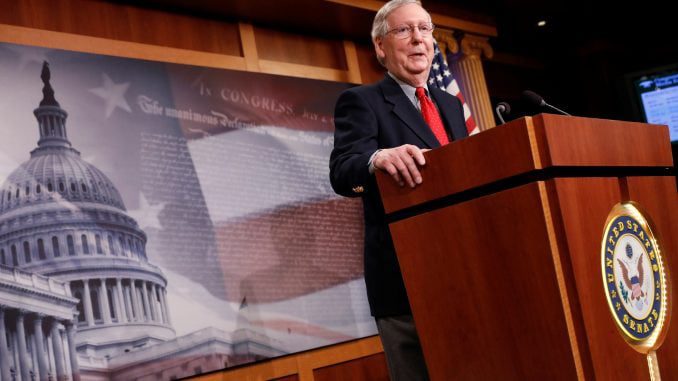
Amid the turmoil of the first month of the Trump administration, with courts blocking his temporary travel ban and Michael Flynn resigning, the solid partisan divisions in the electorate remain in place.In Congress, Republicans have almost unanimously supported administration policies and appointments (except for withdrawn Labor nominee Andy Puzder). Democrats have almost unanimously opposed them, casting more “nay” votes on cabinet nominees than at any time in memory.The same thing is apparent in polls. Past new presidents have enjoyed honeymoon periods, with many opposition party voters giving them approval. Not so with Donald Trump. The RealClearPolitics average of recent polls shows him with 44.9 percent approval and 49.5 percent disapproval.Even the ban on travel from seven Middle Eastern countries elicits a similar response though a 57 percent majority, according to a Fox News poll, rejects the belief held by many liberal columnists and some federal judges that it amounts to the “Muslim ban” that candidate Trump briefly advocated more than a year ago.During the 2016 campaign, it was widely assumed that many Republicans would not vote for Trump. Some college-educated Republicans didn’t, but their numbers were offset by non-college-educated whites who had previously voted Democratic. Many Trump voters have qualms about their candidate, but for the moment, they’re sticking with him.They’re also standing by the GOP. Public opinion is more favorable to the Republican Party than it has been in years. That’s not because Democratic voters like it more, but because Republican voters who previously had some reservations about it have rallied to its standard.Meanwhile, Democratic politicians and, it seems, a large majority of Hillary Clinton voters remain totally disinclined to compromise with the candidate most had assumed she could easily beat. Some style themselves “the Resistance,” as if they were Frenchmen opposed to the Hitler-allied Vichy regime.They seem to assume that vitriolic and sometimes even violent or vulgar opposition to Trump will turn around a critical mass of voters. That’s possible, if he is seen as producing bad results, but there’s little evidence it’s happened yet.In the process, Democrats are abandoning the advantage that an opposition typically has in off-year contests, the fact that its candidates can adapt to local terrain while the president’s party is tethered to his persona and record, which may be unpopular as his actions reduce his appeal in one or another segment of the electorate.That’s what Democrats did in 2006, with Democratic National Chairman Howard Dean’s 50-state organizational efforts and the recruitment by Rahm Emanuel and Chuck Schumer of moderate candidates in previously Republican-leaning congressional districts and states. Today’s Democrats, in contrast, seem bent on defeating in primaries incumbents and challenger candidates who make any bows to Trumpism.That’s high-risk, given the political map. The Senate seats up in 2018 were filled in Democratic 2006 and the Obama re-election year of 2012, and Democrats hold 25 to Republicans’ nine and have a chance to gain only two. Democrats must defend five seats in states Trump carried by double-digit percentages and five more he carried more narrowly, plus three more Clinton won by only 2 to 5 percent.In the House, Democrats need a net gain of 24 seats for control. But thanks largely to demographics, with Democrats clustered in central cities, Trump carried 230 congressional districts, compared with Clinton’s 205.Democrats are talking of targeting the 23 Republican-held districts carried by Clinton, 15 of which have large numbers of college-educated whites. They’ll have a test run in the April 18 special election to fill the Atlanta-area seat of Health and Human Services Secretary Tom Price; previously heavily Republican, it gave Trump only a 1.5 percent margin.But will the rage exhibited in the streets of Brooklyn and Berkeley reverberate in Buckhead? It’s certainly not likely to help the 12 incumbent House Democrats defending districts carried by Trump.Currently, both sides are sticking with the approach they employed in 2016. Events can change attitudes, but at the moment, it looks like uphill sledding for the side that lost narrowly but decisively in November.Michael Barone is a senior political analyst for the Washington Examiner, resident fellow at the American Enterprise Institute and longtime co-author of The Almanac of American Politics.



